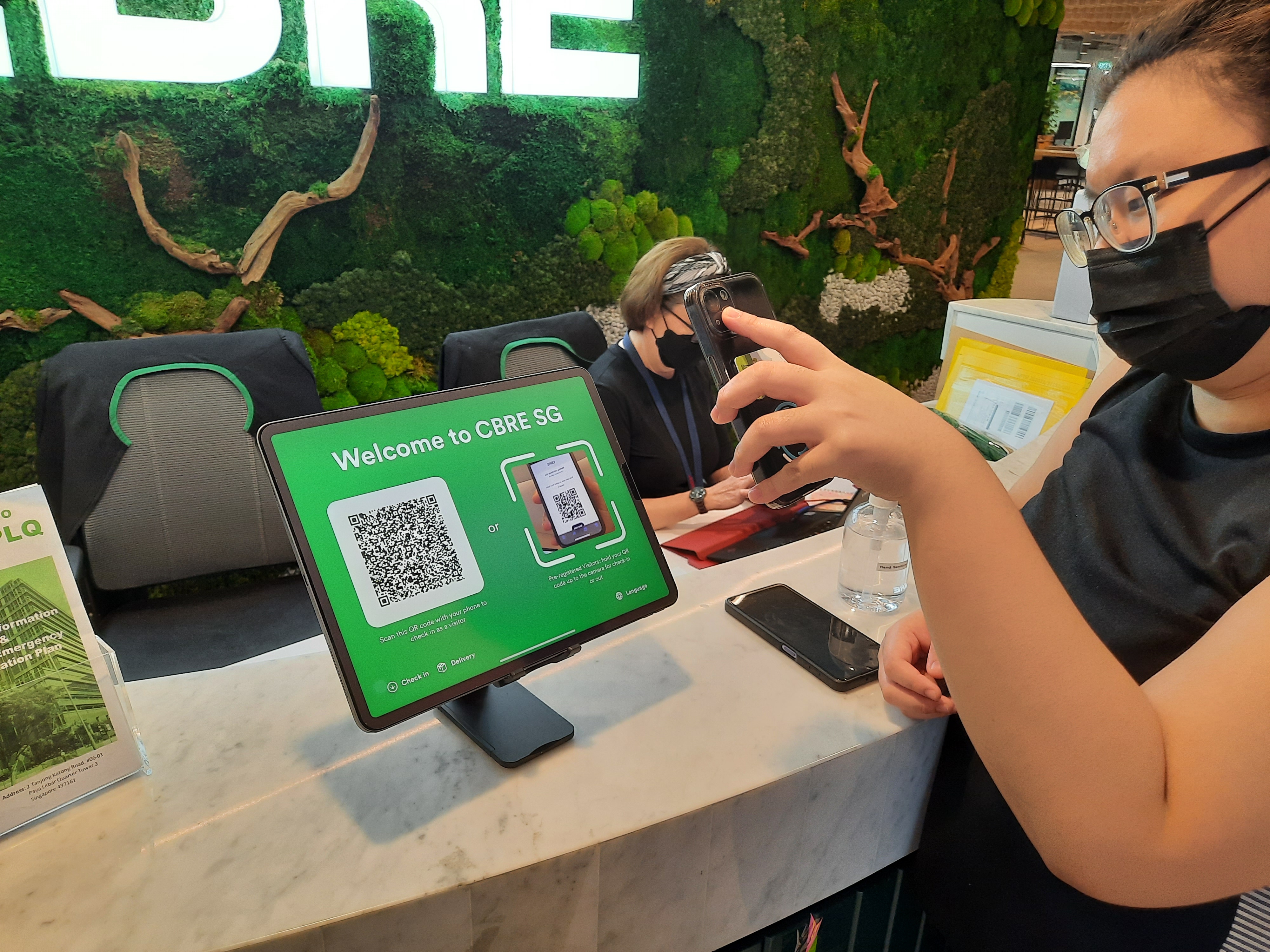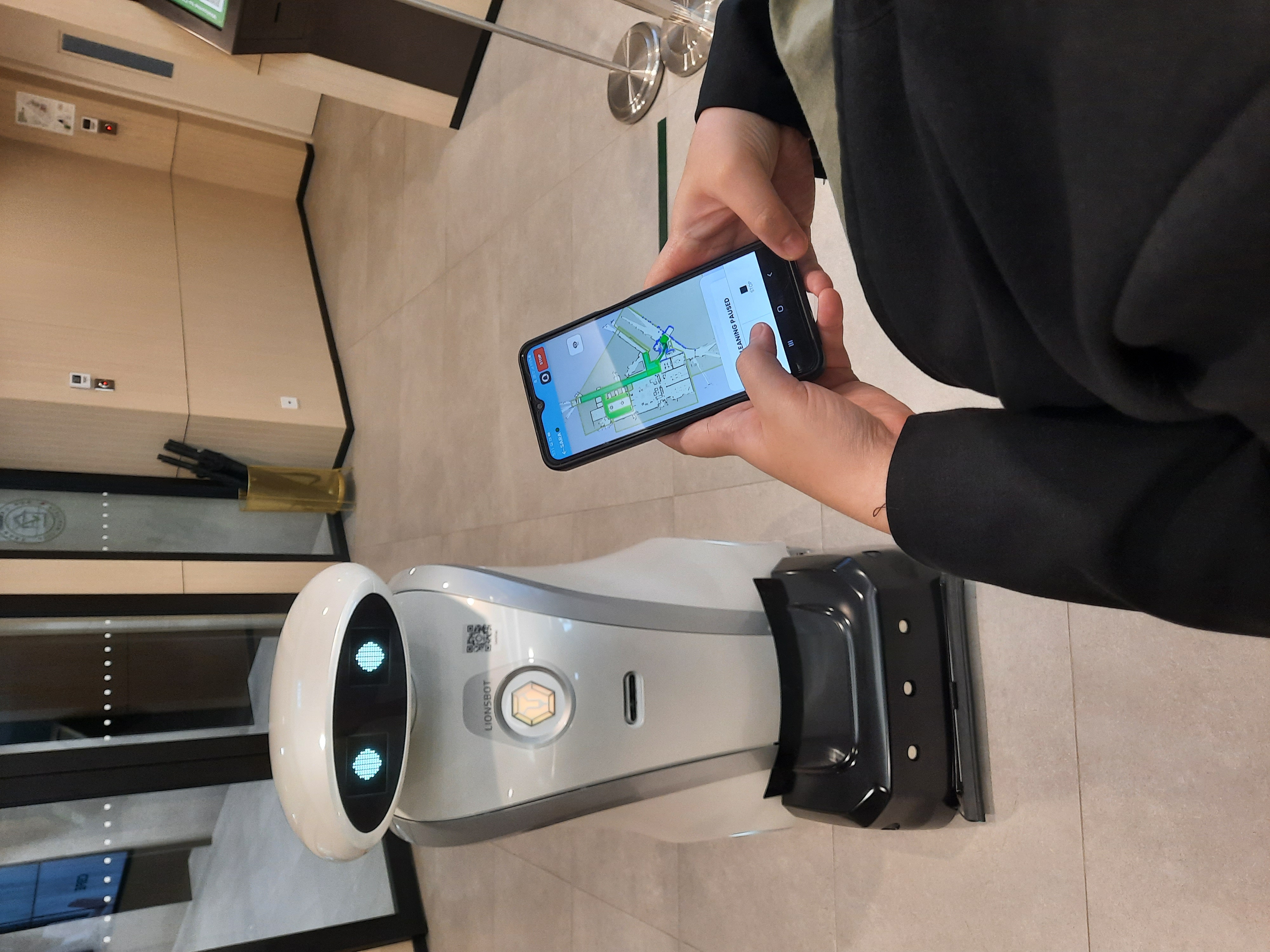When the COVID-19 circuit breaker measures started in 2020, building owners and managers scrambled to ensure that all safety measures and cleaning protocols were strictly adhered to.
But buildings that had incorporated smart Facilities Management (FM) systems, fared better than those without. These buildings were more prepared to handle the multitude of pandemic protocols, noted Mr Loh Wei Loon, Senior Managing Director at CBRE Global Workplace Solutions, Singapore.
|
|
.jpg?sfvrsn=389bbb5d_0) Mr Loh Wei Loon, Senior Managing Director at CBRE Global Workplace Solutions Mr Loh Wei Loon, Senior Managing Director at CBRE Global Workplace Solutions
|
|
The success of smart FM lies in the use of technology, such as surveillance cameras and data analysis platforms, which are able to monitor cleaning, security, landscaping and air-con performance – right down to the exact number of people entering the premises. Buildings with smart FM could operate effectively and systematically, putting in place new sanitation and social distancing protocols to counter COVID, and for occupants to feel safe to enter buildings.
In hindsight, the pandemic was a silver lining – accelerating the adoption of smart solutions within the Built Environment (BE) sector, in a bid to become more resilient.
As Mr Loh puts it, “FM is the “invisible hand that ensures everything runs smoothly. It also ensures the building fulfils its design purpose, runs optimally and has a workplace environment that suits its occupants”.
CONNECTIVITY AND COST SAVINGS
A strong player in smart FM systems, CBRE offers key insights on a shared Vantage Analytics platform. It allows the company’s FM professionals as well as building owners and developers to view FM metrics all in one platform.
“Imagine FM professionals walking around the lobby with a tablet or a smartphone, monitoring the performance of the facilities without having to be in a control room,” said Mr Loh.
This allows different parties across a building to look at relevant data to provide real-time responses and solutions. In some instances, there is no need for human intervention.
Meanwhile, more advanced technologies like drones enable visual inspections of a building’s exterior. Other applications, such as facial and licence plate recognition technologies improve building safety and security, as alerts are sent in the event of an unauthorised entry and trespass.
The visitor registration system at CBRE allows visitors to perform a self check-in, while the host would be notified when the visitor has arrived. The system enables a seamless and fast registration, reducing manual recording and registration, as well as the need for a receptionist to be manning the reception.
|
|
 A visitor performing a self check-in using CBRE’s visitor registration system. A visitor performing a self check-in using CBRE’s visitor registration system.
|
|
The cleaning robot is controlled by a user-friendly mobile application, where the robot’s travelling route and cleaning schedule can be easily configured. These are some examples of technology used in FM to improve efficiency.
|
|
 Using a user-friendly mobile application to configure the travelling routes and schedules of a cleaning robot. Using a user-friendly mobile application to configure the travelling routes and schedules of a cleaning robot.
|
|
All these measures not only improve communication, but also reduce costs and manpower.
At JTC Corporation, drones have been used in a pilot scheme for periodic structural inspection. Additionally, CBRE has actively identified and recommended cost saving opportunities in daily operations such as reducing its annual façade cleaning that helped to achieve a saving of S$150,000. Now, cleaning is carried out only when necessary.
Another large multinational bank has saved 40 per cent in managerial and operational costs through CBRE’s smart FM services, according to Mr Loh.
STRONG AND SUSTAINABLE BE SECTOR
Smart solutions also bring greater sustainability. Buildings with smart FM systems enables the FM provider to identify energy wastage and reduce energy consumption, which aligns with the Singapore Green Building Masterplan (SGBMP).
The plan aims to deliver “80-80-80 in 2030” targets for a low-carbon BE: Greening 80 per cent of Singapore’s buildings (by GFA) by 2030; ensuring that 80 per cent of new developments are Super Low Energy from 2030; and attaining 80 per cent improvement in energy efficiency (over 2005 levels) for best-in-class green buildings by 2030.
The key to achieving this requires the transition to Integrated FM and Aggregated FM (IFM/AFM), so that businesses and building owners can manage different FM services and ensure energy usage more efficiently. This is done by integrating all services on a shared platform that can manage an aggregated portfolio of buildings.
To support the SGBMP targets, BCA has introduced a $30 million IFM/AFM grant to encourage building owners and companies to adopt these technologies.
“We plan to fund around 10 to 15 projects across different building typologies. This will establish the business case for wider adoption,” said Mr Tan Kiat How, Minister of State, Ministry of National Development & Ministry of Communications and Information in his speech at the Committee of Supply Debate in March 2022.
The response has been encouraging. CBRE’s Mr Loh noted that the grant has drawn more developers and building owners to consider investing in smart FM systems.
“Ever since the grant was announced, we've seen a lot of interest from many people – folks who have single buildings, multiple buildings, and just general interest in FM,” he said.
DRAWING TALENT TO A GROWING INDUSTRY
With the technological advances in FM, the hope is for more talents to join the BE sector and enjoy a promising career.
While the field is traditionally associated with labour-intensive work typically done by older staff, Mr Loh said the incorporation of technology should make it appealing to the younger generation too.
“They were born into a technologically-driven era and they expect it. They bring a different skill set to the industry, enabling it to then transform,” he added. At CBRE, FM professionals are known to be problem-solvers. Their diverse backgrounds and experiences enables them to collaborate and create seamless and efficient customer service journeys for customers of varying needs.
The industry is also attractive as it is fairly recession-proof. Where there are buildings, there will always be a need for people to manage and maintain them.
“(Young jobseekers) will have the rare chance to enter this growing industry, and be part of the transformation with job opportunities in managerial and data analytics skills while supporting a greener, safer environment,” said Mr Loh.
“Knowing that you are contributing in your own small way towards an industry that is responsible for many jobs which enable a green future, should be an exciting prospect for anyone.”
In partnership with employers, CBRE provides apprenticeship-based programs to provide fresh graduates from the Post-Secondary Education Institutes (“PSEIs”), such as the Polytechnics and Institute of Technical Education (“ITE”), the opportunity to build on skills and knowledge they have acquired in school, and better support their transition into the workforce. Graduates are rotated and assigned different accounts, so as to expose them to the diverse types of work.
Interested to be part of the transforming Built Environment? BCA collaborates with industry firms for the BCA-Industry iBuildSG Undergraduate Scholarship/Sponsorship programmes. Find out more here: https://go.gov.sg/ibuildsgprogrammes.